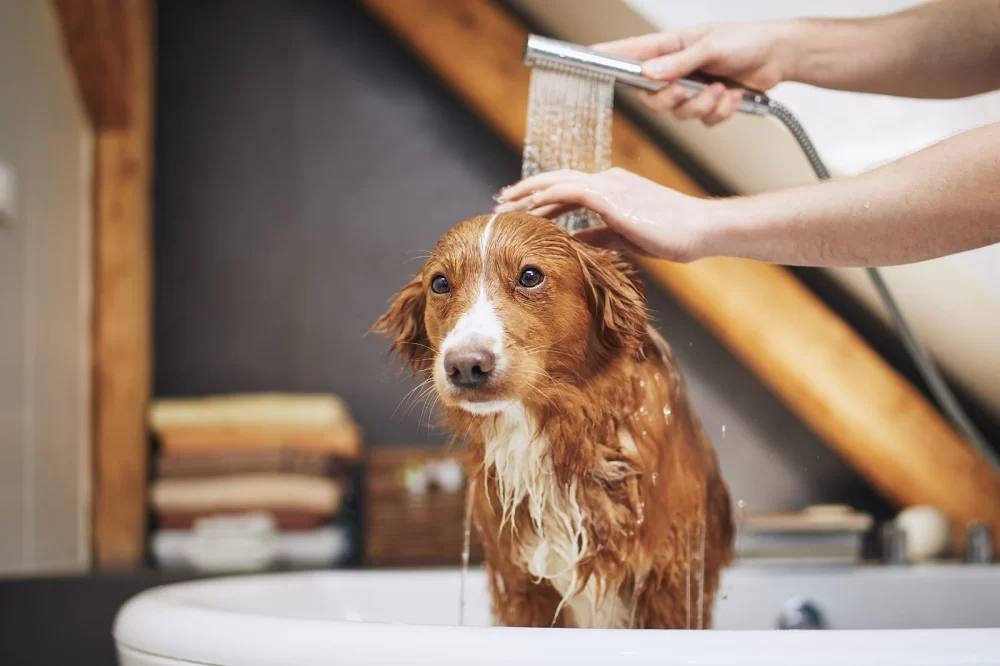How to Train a Dog to Be Comfortable with Grooming
As a pet parent, one of my top priorities is making sure my dog is happy and comfortable. When I first got my dog, Max, I had no idea how challenging grooming sessions could be. I remember the first time I tried to brush his coat—it was like trying to wrestle with a wild animal! Max would squirm, whine, and sometimes even snap at the brush. Sound familiar? If you're struggling to groom your dog, don’t worry. With some patience, consistency, and positive training, you can teach your dog to enjoy grooming or at least tolerate it without stress. Let me walk you through the process that worked for Max and me!

VCA Arboretum View Animal Hospital, 2551 Warrenville Rd, Downers Grove, IL 60515, USA
See Details1. Start Early: Get Your Dog Used to Being Touched
Whether you have a puppy or an older dog, it’s always best to start early when introducing them to grooming. I began brushing Max when he was just a little pup, and the key was making it a positive experience from the start. If you have a younger dog, start by gently touching their paws, ears, and face, as these are areas that can be sensitive. I remember how Max would freeze when I first touched his paws, but over time, with plenty of praise and treats, he began to relax. The more your dog gets used to being touched in these areas, the easier grooming will become. Make it a daily habit so your dog starts to expect and enjoy the attention.
2. Make Grooming a Positive Experience
One of the most important steps in training a dog to be comfortable with grooming is to make the experience positive. Max was very sensitive to the sound of clippers at first, so I took things slow. I would leave the clippers turned off near him while giving him treats, so he learned that the clippers weren’t something to fear. Eventually, I turned them on for short periods while rewarding Max with his favorite treats, allowing him to get used to the sound before using them on him. Each time we practiced, I rewarded him for calm behavior, reinforcing that grooming meant good things. Over time, Max became so accustomed to the process that he would even walk up to me and sit when he saw the grooming tools come out.
3. Gradual Desensitization: Introduce Tools Slowly
If your dog is frightened by grooming tools, it’s essential to take things slowly. Don’t rush into a full grooming session right away. Start by introducing the tools in a relaxed environment, allowing your dog to sniff and inspect them at their own pace. For Max, I would leave the grooming brush lying on the floor near his bed so he could explore it without pressure. After a few days of him sniffing and getting used to the presence of the brush, I started gently brushing his back for short periods. Gradually, I worked my way to more sensitive areas like his legs and belly. The goal was to desensitize him to each tool and step in the grooming process, and it worked wonders.
4. Be Patient and Go at Your Dog’s Pace
One of the most important things I learned in training Max for grooming was patience. Max didn’t become comfortable with grooming overnight, and your dog won’t either. It’s important to go at their pace. Some dogs will take to grooming faster than others, and that’s okay. If your dog starts to show signs of stress—like growling, trying to escape, or becoming too tense—stop and give them a break. I learned to recognize Max’s stress signals and would take a pause, offering him a treat or toy to help him calm down before continuing. Over time, Max started to associate grooming with positive outcomes, and his anxiety started to lessen.
5. Use Positive Reinforcement: Treats and Praise
Max was very food-motivated, so I used that to my advantage. Positive reinforcement is key in teaching your dog to be comfortable with grooming. After each successful brushing session, I gave Max a treat and lots of praise. This helped him link the grooming process with something enjoyable. Even if we only managed a few minutes of brushing, I would reward him for staying calm and cooperative. The key is consistency—each time your dog remains calm during grooming, reward them with praise, treats, or a favorite toy. Over time, your dog will learn to associate grooming with positive rewards.
6. Keep Sessions Short and Stress-Free
When I first started grooming Max, I made the mistake of trying to groom him for too long. This only resulted in frustration for both of us. To make grooming less stressful, keep the sessions short and focused. Begin with just a few minutes of brushing, especially in the beginning. Gradually increase the time as your dog becomes more accustomed to the process. It’s important to avoid overwhelming your dog. If they seem uncomfortable or agitated, stop the session and try again later. The goal is to keep the experience as stress-free as possible.
7. Introduce Different Grooming Tools
When training your dog to be comfortable with grooming, it’s important to introduce them to different grooming tools, such as nail clippers, combs, or scissors. For Max, he was fine with the brush, but he initially hated having his nails trimmed. I took a slow approach, gently touching his paws with the clippers without actually trimming his nails. Each time he remained calm, I gave him a treat. Over time, he became less sensitive to the clippers and eventually allowed me to trim his nails without any fuss. The key here is to take it step by step and always use rewards to reinforce calm behavior.
8. Visit a Professional Groomer for Extra Help
If you find that your dog is still struggling with grooming despite your efforts, it may be helpful to visit a professional groomer. A groomer has experience working with dogs of all temperaments and can provide guidance on how to handle your dog’s grooming needs. Max was a bit nervous during his first professional grooming session, but the groomer was gentle and experienced, which helped him feel more at ease. A professional groomer can also offer tips on maintaining your dog’s coat between grooming sessions and provide advice on specific tools or techniques for your dog’s breed.
9. Groom Regularly to Build a Routine
One of the best ways to keep your dog comfortable with grooming is to make it a regular part of your routine. Max got used to the idea of grooming because it became a consistent and predictable part of his life. Whether it’s brushing, nail trimming, or bathing, establish a grooming routine and stick to it. Over time, your dog will come to expect it and may even look forward to these bonding sessions. The key is consistency and making sure that every grooming session ends on a positive note.
10. Understand Your Dog’s Limits
Every dog is different, and some dogs may have more difficulty with grooming than others. If you’ve been patient and consistent but your dog still shows signs of extreme stress or aggression, it might be a sign that grooming is just too overwhelming for them. In such cases, it’s important to work with your vet or a professional dog trainer to determine the best course of action. Some dogs may benefit from desensitization techniques, while others may need extra help to manage their anxiety. Remember, every dog is unique, and there’s no one-size-fits-all approach to training them for grooming.











